Get PeakVisor App
Sign In
Search by GPS coordinates
- Latitude
- ° ' ''
- Longitude
- ° ' ''
- Units of Length

Yes
Cancel
Share ×

Scan the QR code and open PeakVisor on your phone
❤ Wishlist ×
Choose
Delete
Morton National Park is a protected area nestled in the Southern Highlands of New South Wales in Australia between Canberra and Sydney. It’s known for its deep valleys, waterfalls, and wildlife, as well as popular activities like hiking, mountain biking, and birdwatching. There are 99 named mountains in Morton National Park, the highest of which is Mount Hoddle (917 m/3,009 ft) and the most prominent of which is Pigeon House Mountain (Didthul) with 720 m (1,490 ft) of prominence.

Morton National Park covers almost 200,000 hectares (494,200 acres) of terrain, and it lies just 170 km (106 mi) to the south of Sydney in New South Wales, Australia. The boundaries of the national park extend from Belmore Falls and Fitzroy Falls in the north down to Budawang National Park in the south.
The rocky sandstone landscape of the region rises to various summits across the national park. The peaks in the park are part of the Budawang Range, which is commonly referred to as just the Budawangs. The Budawangs are part of a spur of the Great Dividing Range and also include the Budawang National Park, which is located to the south of Morton National Park.
The park area is carved out by the Shoalhaven and Kangaroo Rivers along with several creeks. These waterways feed some of the notable waterfalls in the park, including Fitzroy Falls and Belmore Falls in the northern section.
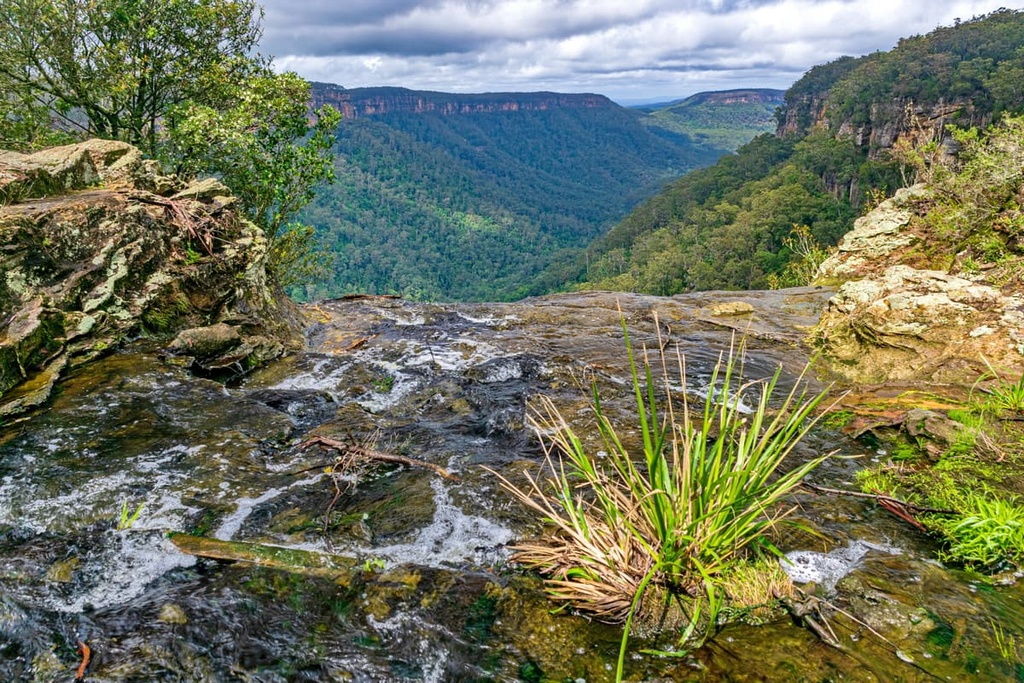
Most of Morton National Park covers a flat plateau that is dissected by deep gorges carved out by rivers.
The landscape of the park consists of horizontal Permian siltstone, sandstone, shale, and conglomerate. Some of the interesting rock formations that you can see from the various lookouts in the area are a result of the contoured weathering of horizontal rock, which gives the region a terraced appearance.
Some people mistake the appearance of the dominant Pigeon House Mountain as being a volcanic formation. However, it consists of marine bedrock and other sedimentary rock that dates back 100 million years to a time when Australia was located close to Antarctica. You can admire the many layers of sandstone and siltstone that are visible on Pigeon House (Didthul) while hiking in the area.
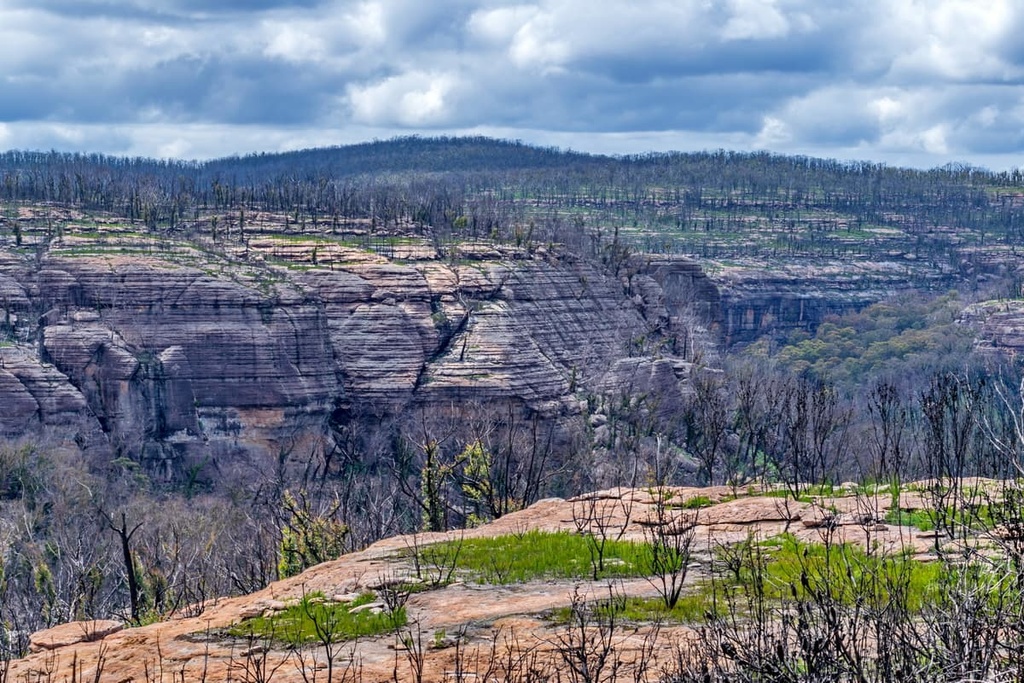
Morton National Park is home to plenty of wildlife, and it’s a great spot for keen photographers and birdwatchers.
As far as flora goes, the park is home to a varied combination of rainforest and eucalypt forest, as well as sandstone flora, which includes honey flower, banksia, wattle, and tea-tree. You can also admire some incredible wildflowers in the park during the spring, particularly flowering boronias and purple flowering chocolate lilies.
Some of the wildlife that you can spot in the park include bowerbirds, lyrebirds, eagles, falcons, ground parrots, swamp wallabies, gliders, and kangaroos. While the waterways and rivers in the park are home to platypus, you’ll only spot one if you’re lucky!
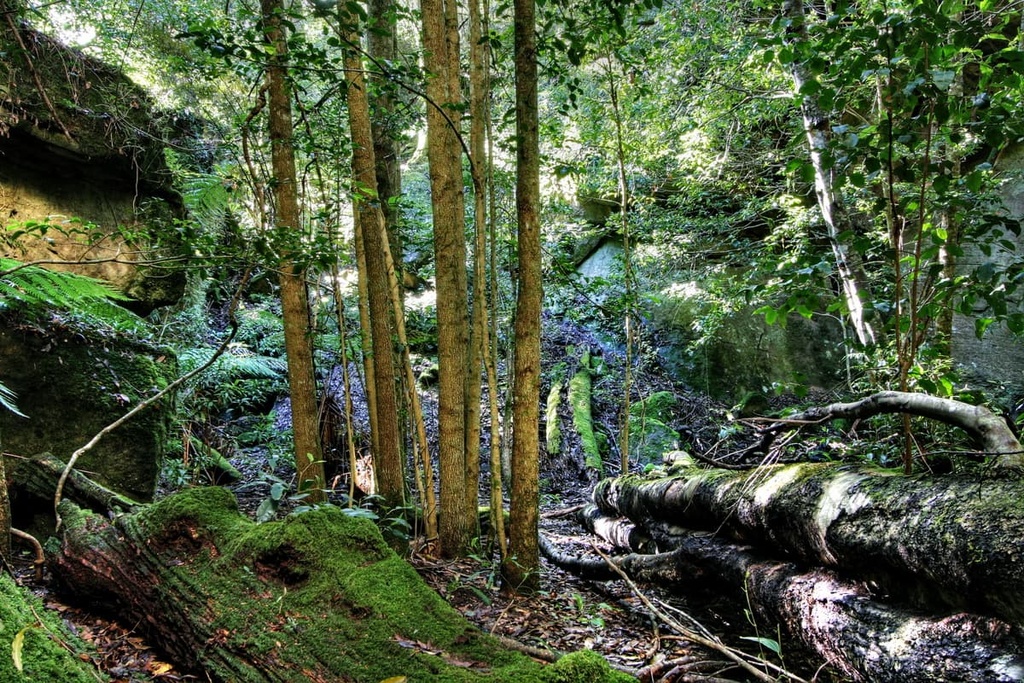
The area of Morton National Park is the traditional country of the Yuin people. Aboriginal cultural sites in the area date back more than 20,000 years. Some of the prominent mountains, particularly Didthul, are significant sites in Yuin mythology.
Didthul, which is otherwise known as Pigeon House Mountain, was one of the landmarks that Captain James Cook reportedly sighted during his journey along the eastern coastline of what is now Australia in 1770.
Cook named the peak Pigeon House, but the preferred name for the mountain is now Dithul, which is the original name given to it by the Aboriginal people who have lived in the region since time immemorial.
The area was declared a National Park in 1938. It was named after Mark Morton, who was a member of the state assembly and campaigned for the establishment of the reserve.
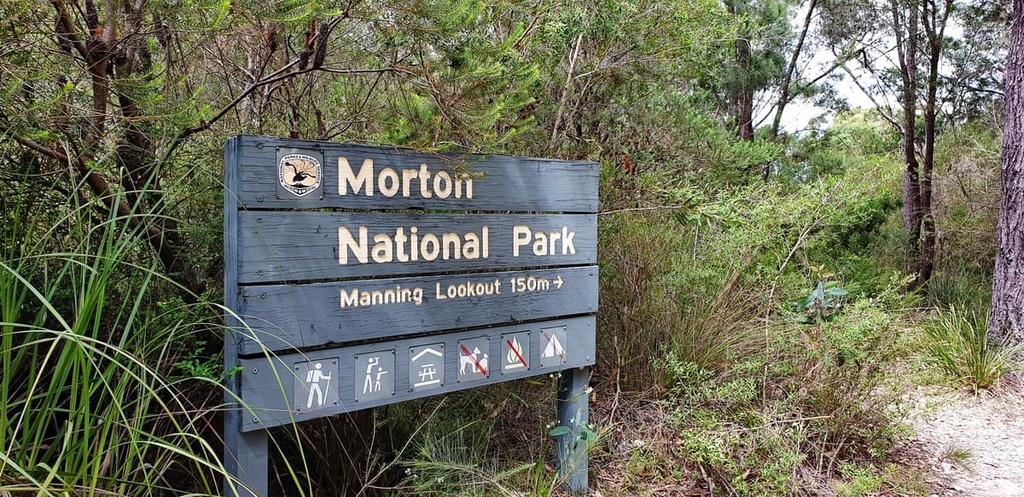
Morton National Park is a popular hiking area, as it features many waterfalls and peaks that you can reach on foot. There are also spectacular views to be had from the various high points in the park.
Here are some of the best hikes in Morton National Park to check out during your next trip to the region.
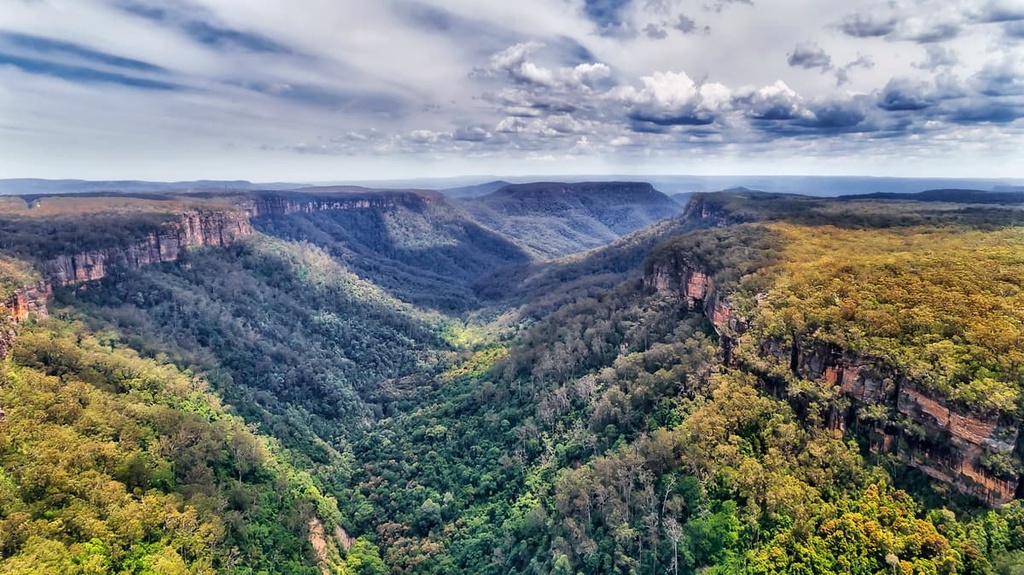
Fitzroy Falls is an incredible drop of water that plunges 81 meters (266 ft) over a sandstone escarpment. The waterfall was known to the Wodi Wodi people for generations, but the first European settler to spot it was Charles Throsby in the early nineteenth century.
The falls are located just a short walk from the Fitzroy Falls Visitor Center at the northern boundary of Morton National Park. There is a viewing platform and lookout from where you can enjoy the view of the falls and the valley.
There are some longer walking trails from the Fitzroy Falls Visitor Center as well. The East Rim Wildflower walking track is a 6.7 km (4.1 mile) round trip hike. It passes several lookouts through an incredible eucalypt forest. Seasonal wildflowers also attract many photographers to the region, as the landscape offers splashes of color in the spring and autumn.
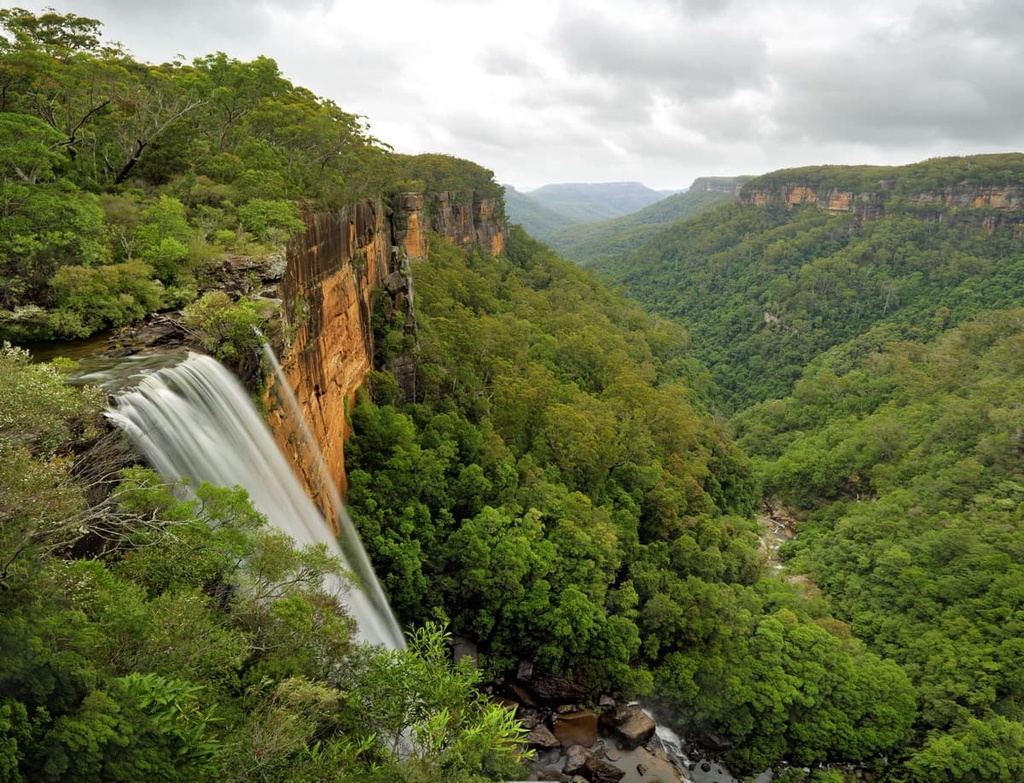
The West Rim walking track is another 3.5 km (2.1 mile) long return hike through eucalypt forests with spectacular views of the waterfalls and gorges of Morton National Park. It follows the western edge of the escarpment to Renown Lookout. It also features seasonal wildflowers, such as the flowering boronia and purple flowering chocolate lilies during the spring months.
Located just a bit further to the northeast of Fitzroy Falls, Belmore Falls is another incredible cascade that’s worth visiting if you’re in Morton National Park. This secluded waterfall has three drops on the Barrengarry Creek in the Southern Highlands and Illawarra region. Over these three drops, the waterfalls range from 77 to 130 meters (253 to 427 feet) tall.
The walk to view the falls starts from Hindmarsh Lookout car park. The 1.8 km (1.1 mi) long return walk offers an incredible view of Kangaroo Valley as well as Belmore Falls, with several lookouts on the way.
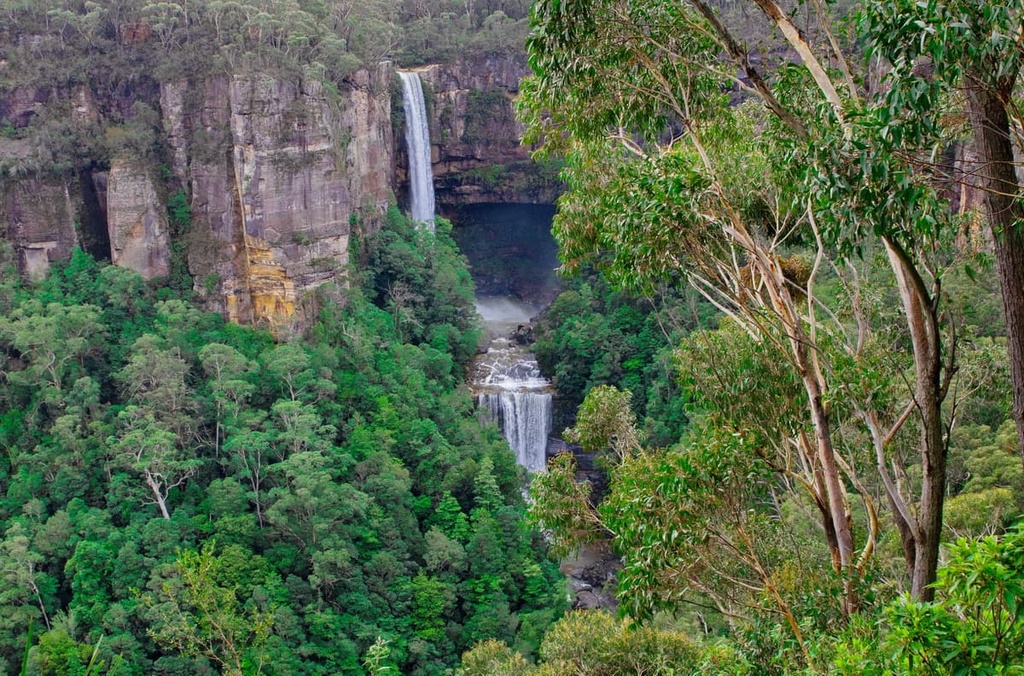
Pigeon House Mountain (Didthul) is a distinctive mountain standing at 720 meters (2,360 feet) in elevation. It’s part of the Budawang Range in Morton National Park, which is located on the South Coast of New South Wales. It’s also known by its Aboriginal name, Didthul, which means “woman's breast,” a name it got due to the shape of the mountain.
Didthul is the most prominent mountain in the park and the path to its summit is one of the most popular hiking trails in the region. This 5 km (3.1 mi) return track to the summit takes around three hours to complete, and it features some pretty steep parts where you have to navigate over sandstone and through forests.
The view from the summit of Pigeon House Mountain is breathtaking, as it provides views over the Budawang wilderness and all the way to Jervis Bay on the coast.
Located toward the southern part of the national park, Mount Bushwalker stands at 641 meters (2,103 ft) in elevation and is situated in the Porters Creek area.
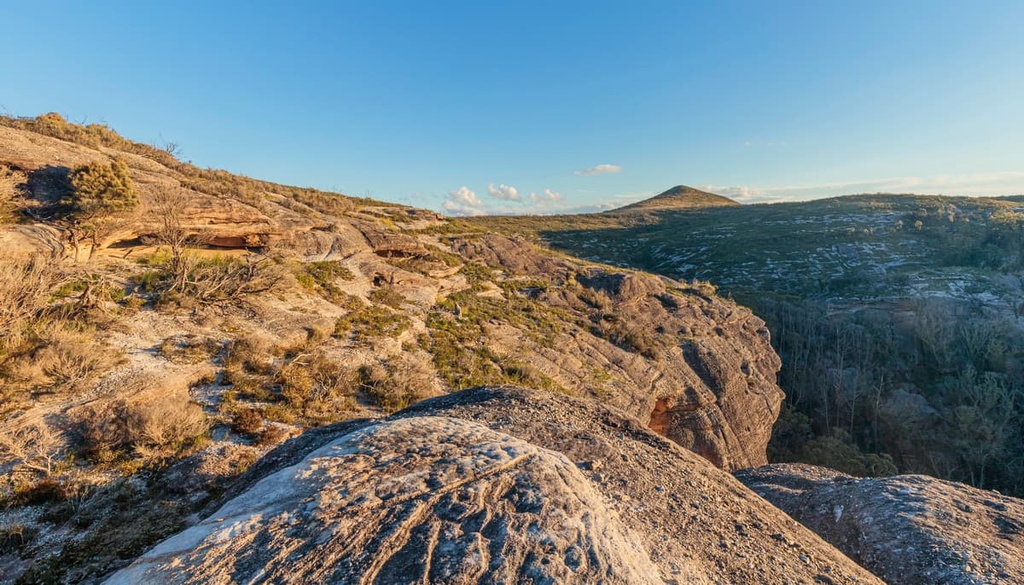
As part of the Budawang Ranges, the sandstone peak of Mount Bushwalker is one of the best hikes in the Morton National Park. The remote trail to the summit is 7 km (4.3 m) long round trip, and it takes you through bushland to a viewpoint where you can enjoy unobstructed vistas of the Castle, Shrouded Gods, and Clyde Gorge.
The Kangaroo River is a major river running through the valley in the central region of Morton National Park. It’s often referred to as Lake Yarrunga.
There is a walking track that runs from Tallowa Dam Road down to the edge of the water. It’s a steep 3.5 km ( 2.1 mi) of walking through pristine nature to get there, but once you do, you can swim and enjoy the river for the afternoon.
There are also many camping spots along the Kangaroo River that are open to public use so long as you follow Leave No Trace principles.
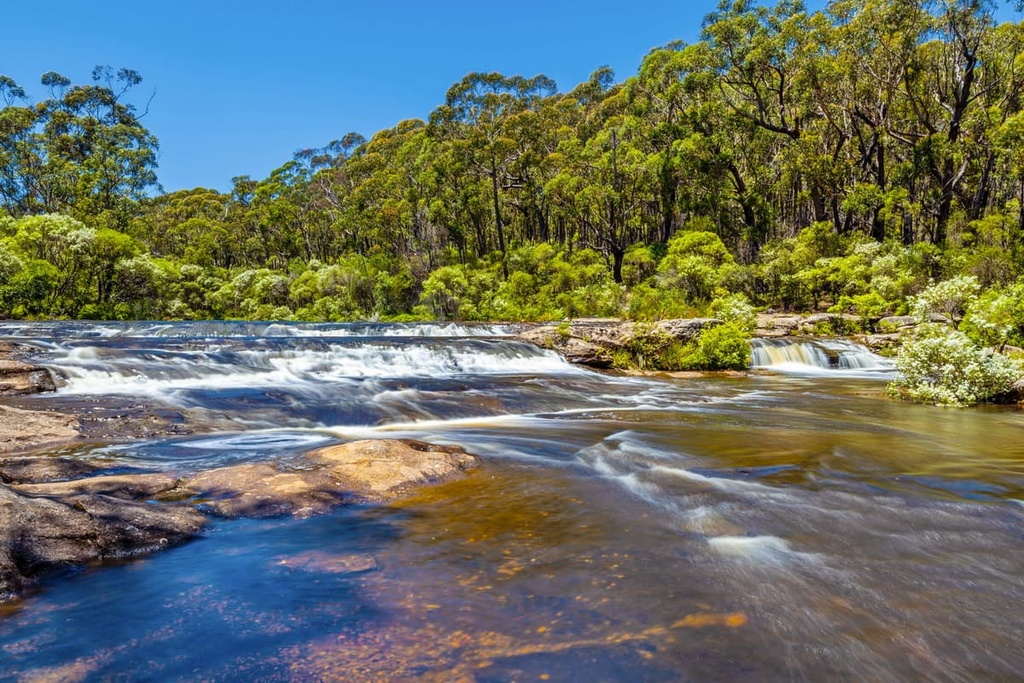
Situated in the far southeastern part of the national park, Granite Falls is a secluded waterfall that can be easily accessed on foot.
There is an easy 500-meter (0.3 mi) long walking track that leads from the car park to the Granite Falls Lookout, which is a fenced platform offering an incredible view of the dense valley and the 63 m (206 ft) high waterfall. In the spring, the landscape around this walk bursts with color from wildflowers such as boronias.
As Morton National Park is located in the Southern Highlands of New South Wales, there are plenty of nearby towns where you can find accommodation and supplies during your trip to the region. Here are some of the best places to stay during your next journey to Morton National Park.
Kangaroo Valley is a small town nestled in a particularly scenic valley. The Kangaroo River runs right through the valley, which boasts wildlife and dense rainforest. It features lush farmland and has plenty of activities including kayaking, walking, and cycling.
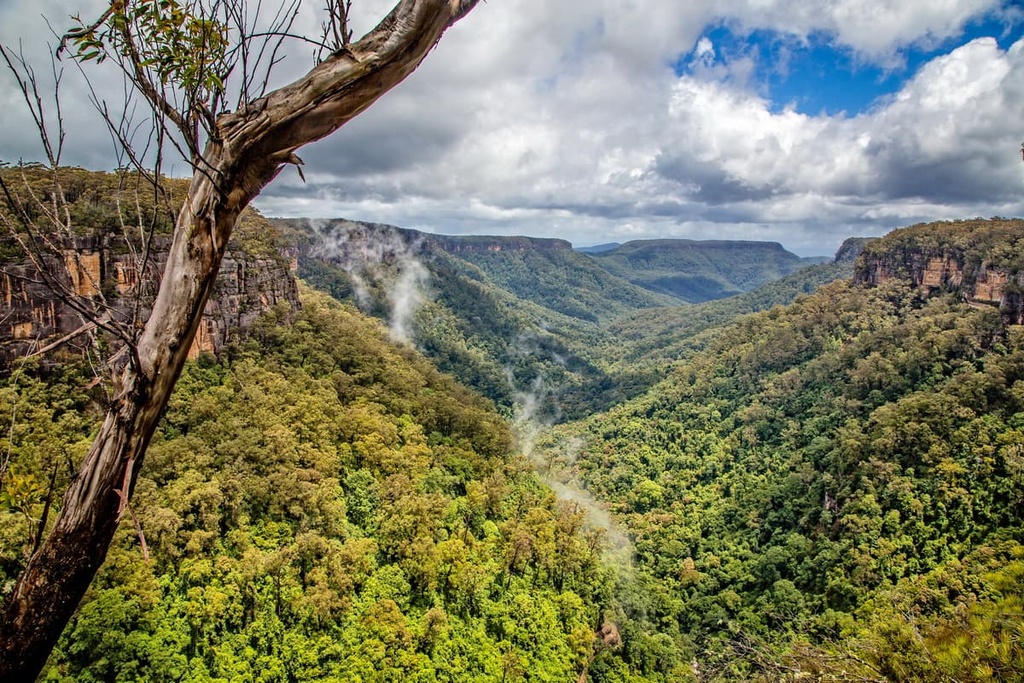
The small town of Kangaroo Valley is located only a two-hour drive from Sydney or Canberra, and it sits on the eastern side of Morton National Park. From Kangaroo Valley, you can access the eastern part of the national park, particularly Lake Yarrunga, Fitzroy Falls, and Belmore Falls.
Located on the western side of the national park, Bundanoon is a small town nestled in the Southern Highlands. The name of the town comes from an Aboriginal word meaning “a place of deep gullies”. It’s located just over 90 minutes by car from Sydney or Canberra, and it is a very charming town with old buildings and quiet streets.
Bundanoon is a nice town to visit on a weekend and to use as a base for exploring some of the attractions on the western side of the Morton National Park, including Fairy Bower Falls.
Nowra is a large town situated in the South Coast region of New South Wales. It’s located a 2.5-hour drive to the south of Sydney on the Shoalhaven River. The name Nowra comes from the Aboriginal word for the black cockatoo. It’s become a commercial hub of the area, so it has plenty of shops and accommodation for visitors to choose from.
While there are museums, art galleries, a golf club, historic houses, and walking trails to explore in town, Nowra also makes for a great base to explore the Morton National Park.
The town is located just half an hour's drive to the south of the Kangaroo Valley area. You can also drive further to the south of the town for half an hour and explore Tianjara Falls. Budderoo National Park is also located to the north, so it’s a great town to base yourself in if you want to travel to some of the national parks of the South Coast region.
One of the southernmost towns with direct access to Morton National Park, Ulladulla is a scenic coastal community that’s located in the Shoalhaven area. It’s located halfway between the bigger towns of Batemans Bay and Nowra.
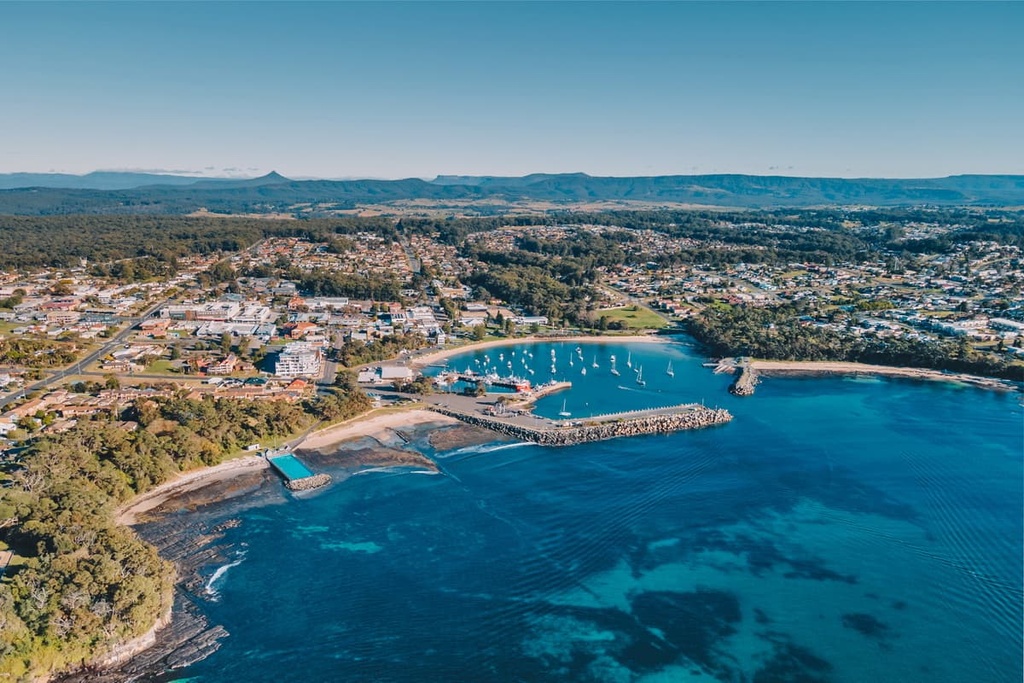
The name of Ulladulla is the modern spelling of an Aboriginal word that is thought to mean “safe harbor,” but this etymology is uncertain as there are few historical records. The first European settlers in the town arrived in 1828.
Ulladulla can serve as a great base from which to explore some of the nearby attractions and hikes in Morton National Park. In particular, Pigeon House Mountain is located just 19 miles (30 km) to the west of Ulladulla and Mount Bushwalker is situated just 17.3 miles (28 km) to the northwest of town.
In addition to the many towns listed above, Morton National Park is located within driving distance of a number of major cities. Here are some of the biggest cities where you can start your adventure in the Southern Highlands of New South Wales.
The main city closest to the national park is Sydney. As Australia’s largest city, Sidney is well-known for its harbor and surrounding coastline. There are plenty of attractions in the city for visitors to enjoy, including the Sydney Opera House, Sydney Bridge, Darling Harbour, Royal Botanic Garden, and Bondi Beach.
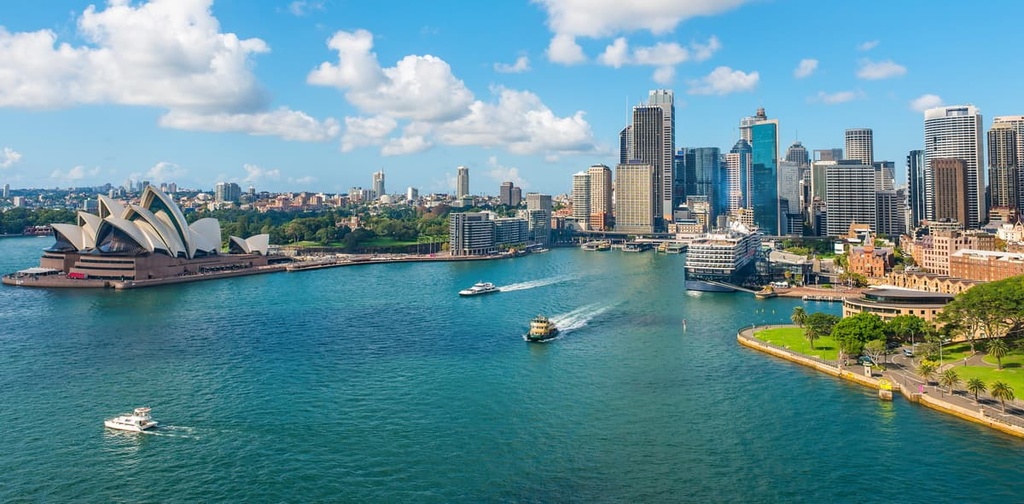
Morton National Park is located just 106 miles (170 km) to the south of Sydney. You can find all the accommodation, transport, and shopping options you need in Sydney, and the city serves as a great base for travelers who want to explore the Budawang Range.
Located to the south of Morton National Park is the city of Canberra. Although it is the capital of Australia, Canberra is a much smaller city than Sydney. However, it is a nice alternative if you’re looking for a home base during your trip to the national park. Canberra is located just under 100 miles (160 km) south of Morton National Park.
You can find some popular attractions in Canberra as well, including Parliament House and the National Gallery. Canberra is often referred to as the “bush capital” as you’ll also find plenty of parkland, national parks, farms, and mountain ranges within a short drive.
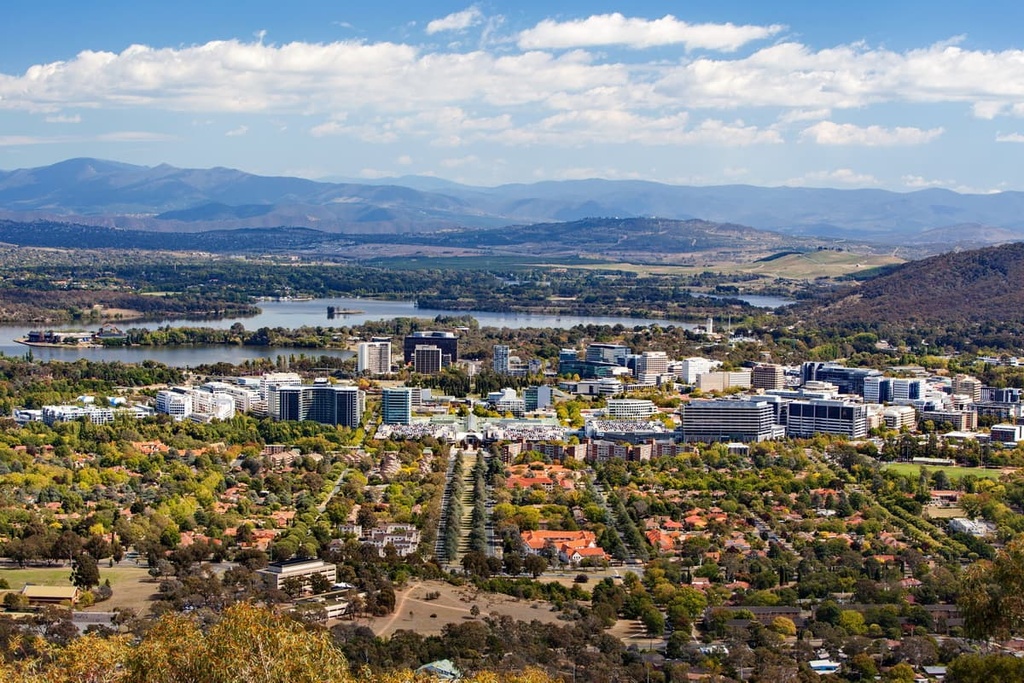
If you’re looking for additional areas for adventure in New South Wales during your next trip to Morton National Park, you won’t be disappointed. Here are some other nearby national parks in New South Wales that you can check out after you finish your travels in Morton National Park.
Budawang National Park sits within the southern Budawang Ranges and is located directly to the south of Morton National Park. This isolated national park is characterized by rugged sandstone terrain and deep valleys.
The park was named after its most prominent mountain, Mount Budawang, which features a rewarding trail that takes you to see panoramic views from the summit. This wilderness area is a popular spot for several outdoor activities, including hiking, camping, swimming, and cycling.
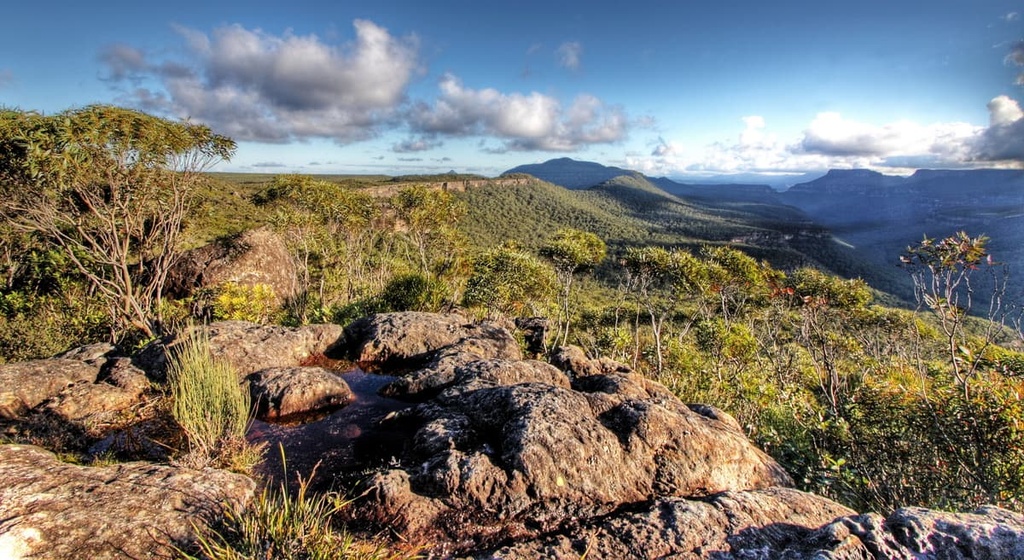
Budderoo National Park is located in the Illawarra region of New South Wales, not far from the coastline and towns of Kiama and Shellharbour. Budderoo sits on the northeast border of Morton National Park.
The park is considered to be an Important Bird Area, as it is home to important species such as the endangered eastern bristlebird, pilot bird, and rock warbler. The most notable part of the park is the Minnamurra Rainforest, which sits in the northeastern corner of the region.
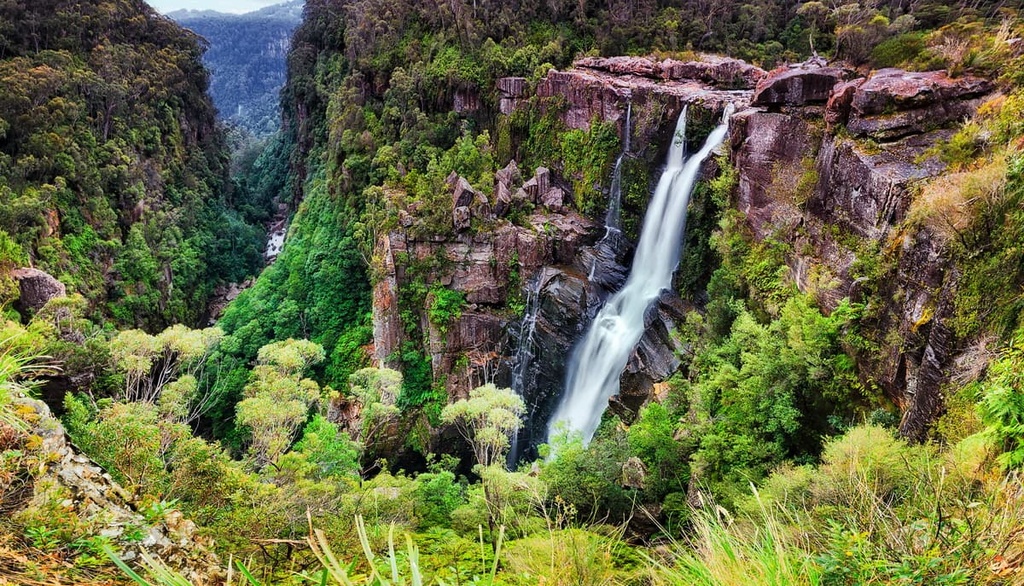
A lesser-known national park, Jerrawangala is a scenic area located on the Great Eastern Escarpment near Nowra.
Jerrawangala sits on the eastern border of Morton National Park, not far away from Tianjara Falls. It is a popular destination for activities like 4x4 driving, cycling, and hiking, but it has few road access points, so it’s not as frequently visited as other nearby national parks.
Explore Morton National Park with the PeakVisor 3D Map and identify its summits.








